De Ludis Circensibus
(The Circus Games)
(The Circus Games)
The Roman circus was a rectangular-oval arena, modelled after the ancient Greek hippodromes, and served as a venue for chariot and horse races and celebratory events of the Roman Empire. Competitors had to race around an avenue (spina) of obelisks and statues that ran down the the centre of the competition space for the majority of its length.
The famed Circus Maximus was the first and largest of the Roman circuses, established in the Murcian valley between the Palatine and Aventine hills, in about the ?4th century BC.
"Meeting the demands of the Roman citizenry for mass public entertainment on a lavish scale, Julius Caesar expanded the Circus around 50 BC, after which the track measured approximately 621 m (2,037 ft) in length, 118 m (387 ft) in breadth and could accommodate an estimated 270,000 spectators (many more, perhaps an equal number again, could view the games by standing, crowding and lining the adjoining hills).*"
"Throughout the republic the circus was used for gladiatorial combats and fights with wild beasts, as well as for races; but after the building of the amphitheatre of Statilius Taurus, and still more after the erection of the Colosseum, the first species of entertainment was largely, although not entirely removed from the circus. The last recorded games took place under Totila in 550 A.D. [..], and in that century the destruction of the circus began.*"The images below include (at least) views of Circus Maximus, the Circus of Maxentius and the Constantinople Hippodrome; the latter arena having been built by the Romans and which saw contests up until the beginning of the 13th century.
Click through each picture for a larger image and then on to the 'Original' for a greatly enlarged version. The engraving plates -- slightly cropped for presentation here -- are mostly either double-page or large fold-out illustrations. Enormous image files (6Mb+) of each full book illustration are available from the source site.
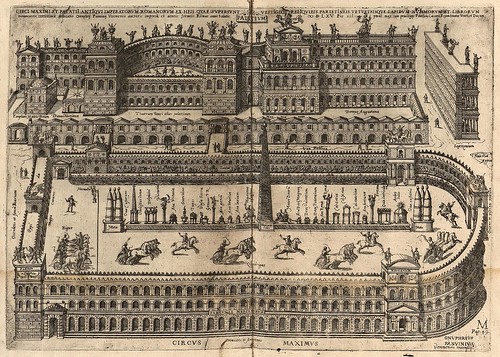
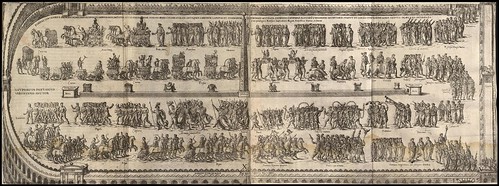
[spliced together from two image files with some arbitrary approximation]

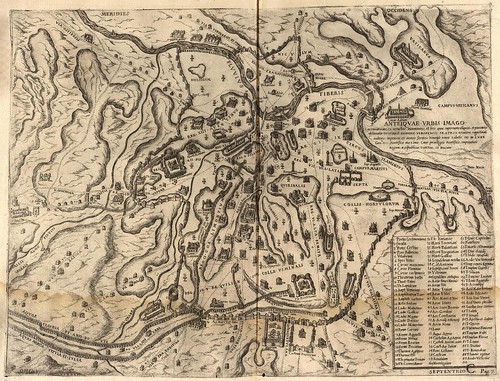
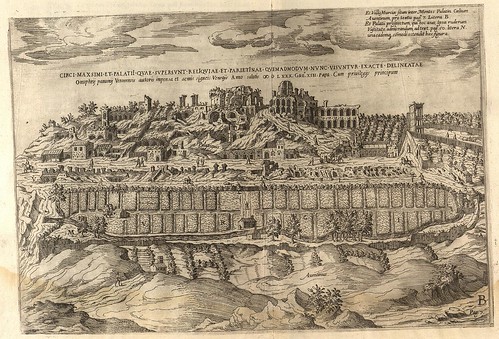


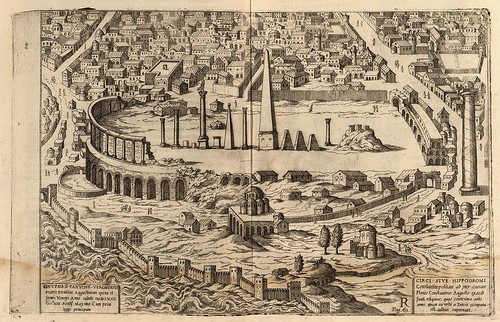
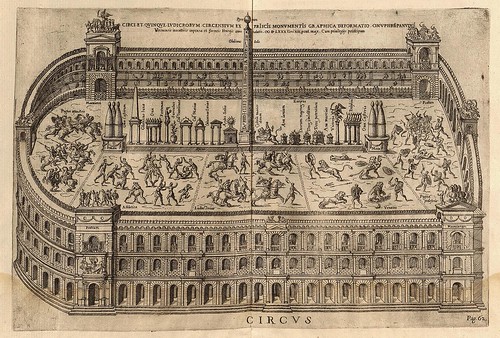



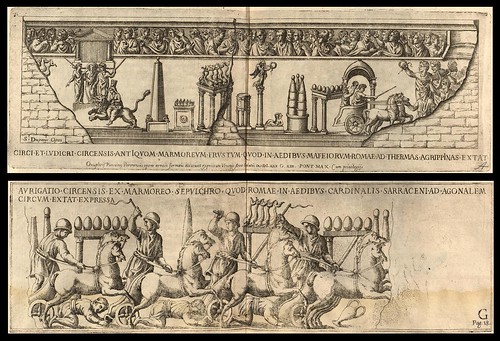
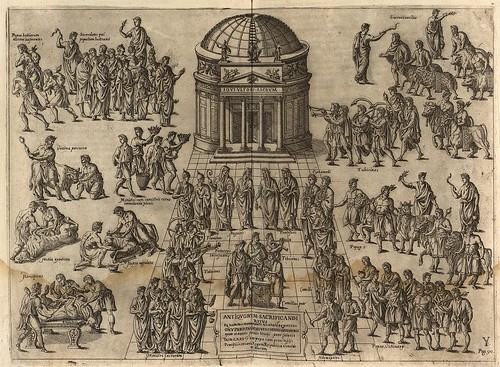
Onofrio Panvinio (1530-1568) was an Augustinian monk and one of the most important Renaissance historians of early Rome. He arrived there from Verona in 1549 and obtained degrees in liberal arts and theology while cultivating a deep interest in archaeology. He was appointed to the position of Corrector and Reviser of the books of the Vatican Library in 1556.
"In his short life Panvinio managed to write approximately 70 works on Roman and ecclesiastical history. His critical studies of Roman medals, inscriptions, architecture and monuments earned him the praise of the greatest of all Renaissance classicists, Joseph Scaliger, who called Panvinio 'the father of all history.' "*Panvinio's enthusiasm for all things antiquarian and the many associated scholarly projects which occupied his life served to bring archaeology to a popular audience. The majority of his published works were not released until after his death and in fact, much of his written legacy remains in manuscript form.
'De Ludis Circensibus' was thought to have been first published in 1600 and features etched and engraved illustrations by Étienne Dupérac, who collaborated with Panvinio for the last three years of Panvinio's life. The plates are often reworkings of earlier designs by Pirro Ligorio that were included in the eclectic assortment of material associated with Antonio Lafreri's so-called 'Speculum Romanae Magnificentiae', an everchanging collection of Roman antiquities prints, assembled and published from the mid-16th century onwards.
- 'Onuphrii Panvinii Veronensis, De Ludis Circensibus, Libri II. De triumphis', 1600, by Onofrio Panvinio is hosted among the Contributions from Augustinian Theologians and Scholars Collection at the wonderful Villanova University Digital Library. [previously: one; two]
- I first heard about this work from Blue Electrode - the Falvey Memorial Library blog at Villanova University. Michael Foight gives some further relevant background that I didn't encounter in any web references during my research.
- 'The Roman Circus and the Circus Maximus' is possibly the most accessible and useful general background piece that I encountered.
- More detail can be found in Circus and Circus Maximus from Bill Thayer's extensive and sprawling web assemblage.
- List of Roman circuses.
- Circus Maximus photographs (&c) at Wikimedia.
- The 'Speculum Romanae Magnificentiae' site at the University of Chicago Library is excellent.
- Onofrio Panvinio in the Catholic Encylopedia.
- Previously related posts (all worth seeing, honest!): Collectio Antiquitatum - Visualizing Rome; Transporting the Vatican Obelisk; The Comic History of Rome.
- There are a couple more images in the set (and more still at the Villanova U. source)



















6 comments :
bellissimo
Thanks for sharing. I finally favourited you because it just doesn't get any better than this.
You're great.
The charm of all those rampant Renaissance horses and lions... not to mention all the sea battles in a rather confined space!
I took a picture of the inscription of Duillius, shown below the column with the ships' beaks, at the Capitoline Museum in Rome:
http://www.flickr.com/photos/theodosius/250655721/
It's an early Latin inscription that celebrates one of the Romans' first naval triumphs.
Excelente post!
Mucho mejor que Gladiator.
Gracias!
Really great! as always.
Post a Comment
Comments are all moderated so don't waste your time spamming: they will never show up.
If you include ANY links that aren't pertinent to the blog post or discussion they will be deleted and a rash will break out in your underwear.
Also: please play the ball and not the person.
Note: only a member of this blog may post a comment.